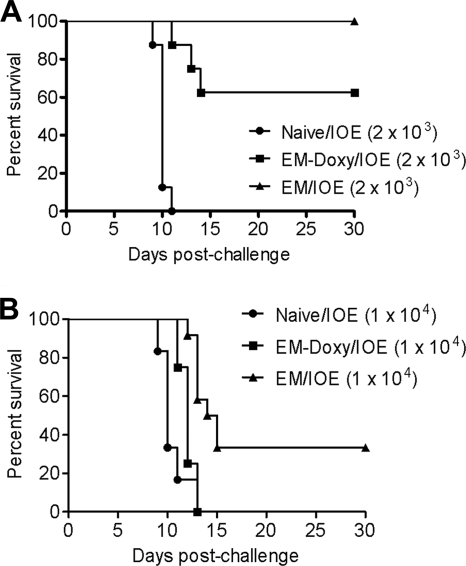FIG. 5.
Persistent E. muris infection contributes to heterologous protection against IOE infection. C57BL/7 mice persistently infected with E. muris and E. muris-primed mice treated with doxycycline were challenged on day 36 postinfection with either an ordinarily lethal lower (A) or a higher (B) dose of IOE (∼2 × 103 or ∼1 × 104 bacterial genomes, respectively). The survival rates after the lethal low-dose IOE challenge were statistically significant in untreated mice persistently infected with E. muris (P < 0.0001) and in E. muris-primed mice treated with doxycycline (P = 0.0001) compared to naive mice. Compared to E. muris-primed mice treated with doxycycline, the higher survival rates after the lethal low-dose and the high-dose IOE challenges were marginally (P = 0.062) and highly (P = 0.0029) significant, respectively, in untreated mice persistently infected with E. muris (A and B). The log-rank test was used for the analysis of survival curves. The data are representative of two independent experiments with eight mice/group per experiment (n = 8).

